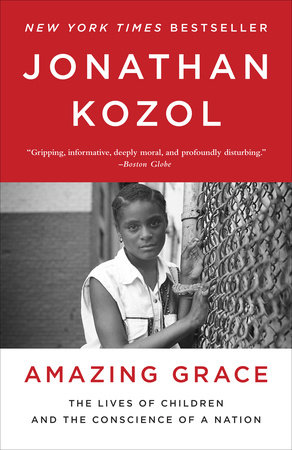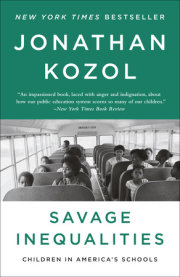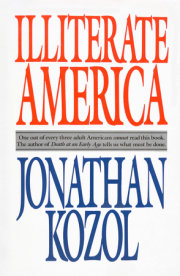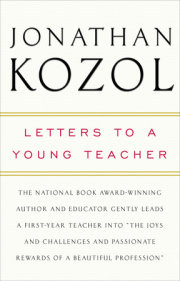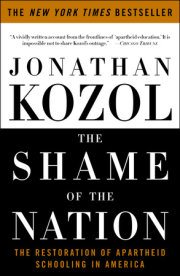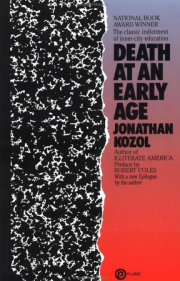The Number 6 train from Manhattan to the South Bronx makes nine stops in the 18-minute ride between East 59th Street and Brook Avenue. When you enter the train, you are in the seventh richest congressional district in the nation. When you leave, you are in the poorest.
The 600,000 people who live here and the 450 000 people who live in Washington Heights and Harlem, which are separated from the South Bronx by a narrow river , make up one of the largest racially segregated concentrations of poor people in our nation.
Brook Avenue, which is the tenth stop on the local, lies in the center of Mott Haven, whose 48,000 people are the poorest in the South Bronx. Two thirds are Hispanic, one third black. Thirty-five percent are children. In 1991, the median household income of the area, according to the
New York Times, was $7,600.
St. Ann's Church, on St. Ann's Avenue, is three blocks from the subway station. The children who come to this small Episcopal church for food and comfort and to play, and the mothers and fathers who come here Or prayer, are said to be the poorest people in New York. " More than 95 percent are poor," the pastor says-"the poorest of the poor, poor by any standard I can think of."
At the elementary school that serves the neighborhood across the avenue, only seven of 800 children do not qualify for free school lunches. "Five of those seven," says the principal, "get reduced-price lunches, because they are classified as only 'poor,' not 'destitute.' "
In some cities, the public reputation of a ghetto neighborhood bears little connection to the world that you discover when you walk thestreets with children and listen to their words. In Mott Haven, this is not the case. By and large, the words of the children in the streets and schools and houses that surround St. Ann's more than justify the grimness in the words of journalists who have described the area.
Crack-cocaine addiction and the intravenous use of heroin, which children I have met here call "the needle drug," are woven into the texture of existence in Mott Haven. Nearly 4,000 heroin injectors, many of whom are HIV-infected, live here. Virtually every child at St. Ann's knows someone, a relative or neighbor, who has died of AIDS, and most children here know many others who are dying now of the disease. One quarter of the women of Mott Haven who are tested in obstetric wards are positive for HIV. Rates of pediatric AIDS, therefore, are high.
Depression is common among children in Mott Haven. Many cry a great deal but cannot explain exactly why.
Fear and anxiety are common. Many cannot sleep.
Asthma is the most common illness among children here. Many have to struggle to take in a good deep breath. Some mothers keep oxygen tanks, which children describe as "breathing machines," next to their children's beds.
The houses in which these children live, two thirds of which are owned by the City of New York, are often as squalid as the houses of the poorest children I have visited in rural Mississippi, but there is none of the greenness and the healing sweetness of the Mississippi countryside outside their windows, which are often barred and bolted as protection against thieves.
Some of these houses are freezing in the winter. In dangerously cold weather, the city sometimes distributes electric blankets and space heaters to its tenants. In emergency conditions, if space heaters can't be used, because substandard wiring is overloaded, the city's practice, according to
Newsday, is to pass out sleeping bags.
"You just cover up ... and hope you wake up the next morning," says a father of four children, one of them an infant one month old, as they prepare to climb into their sleeping bags in hats and coats on a December night.
In humid summer weather, roaches crawl on virtually every surface of the houses in which many of the children live. Rats emerge from holes in bedroom walls, terrorizing infants in their cribs. In the streets outside, the restlessness and anger that are present in all seasons frequently intensify under the stress of heat.
In speaking of rates of homicide in New York City neighborhoods, the
Times refers to the streets around St. Ann's as "the deadliest blocks" in "the deadliest precinct" of the city. If there is a deadlier place in the United States, I don't know where it is.
In 1991, 84 people, more than half of whom were 21 or younger, were murdered in the precinct. A year later, ten people were shot dead on a street called Beckman Avenue, where many of the children I have come to know reside. On Valentine's Day of 1993, three more children and three adults were shot dead on the living room floor of an apartment six blocks from the run-down park that serves the area.
In early July of 1993, shortly before the first time that I visited the neighborhood, three more people were shot in 30 minutes in tree unrelated murders in the South Bronx, one of them only a block from St. Ann's Avenue. A week later, a mother was murdered and her baby wounded by a bullet in the stomach while they were standing on a South Bronx corner. Three weeks after that, a minister and elderly parishioner were shot outside the front door of their church, while another South Bronx resident was discovered in his bathtub with his head cut off. In subsequent days, a man was shot in both his eyes and a ten-year-old was critically wounded in the brain.
What is it like for children to grow up here? What do they think the world has done to them? Do they believe that they are being shunned or hidden by society? If so, do they think that they deserve this? What is it that enables some of them to pray? When they pray, what do they say to God?
Copyright © 2012 by Jonathan Kozol. All rights reserved. No part of this excerpt may be reproduced or reprinted without permission in writing from the publisher.

